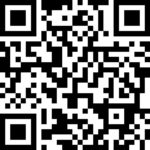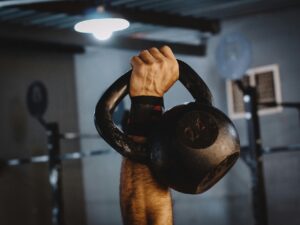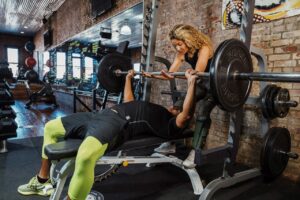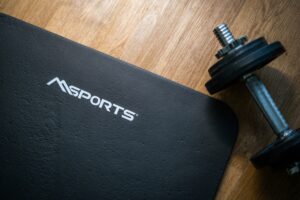You’re probably interested in working out at home, but perhaps you’re unsure where to start or what to do.
If that’s the case, we’ve got you covered with seven simple and effective workouts you can do at home.
Even better? Most of these don’t require any equipment, only some free space.
1. Legs and Glutes Combo
We have the classic legs and glutes combo to start the list. The goal is to train and develop the glutes, quadriceps, hamstrings, adductors, and calves.
However, instead of working the glutes and legs in the same workout, we have two distinct training sessions: one primarily working the quads and hamstrings and one for the glutes.
Let’s see:
| Glute Focus (e.g., Monday) | |||
| Exercise | Sets | Reps | Rest (minutes) |
| Romanian Deadlift (Dumbbell) | 4 | 12-15 | 1.5 |
| Glute Bridge | 4 | 15-20 | 1 |
| Glute Kickback on Floor | 3 | 15-20 (per leg) | 1 |
| Clamshell | 3 | 20-25 (on each side) | 1 |
Notes:
- Lean forward as much as possible on Romanian deadlifts to stretch the hamstrings. However, be careful not to round your lower back.
- If regular glute bridges feel too easy, hold a weight over your hips for additional resistance or perform the single-leg variation.
- You can make glute kickbacks more challenging by using ankle weights.
- Place a weight on your top knee to make the clamshell more challenging.
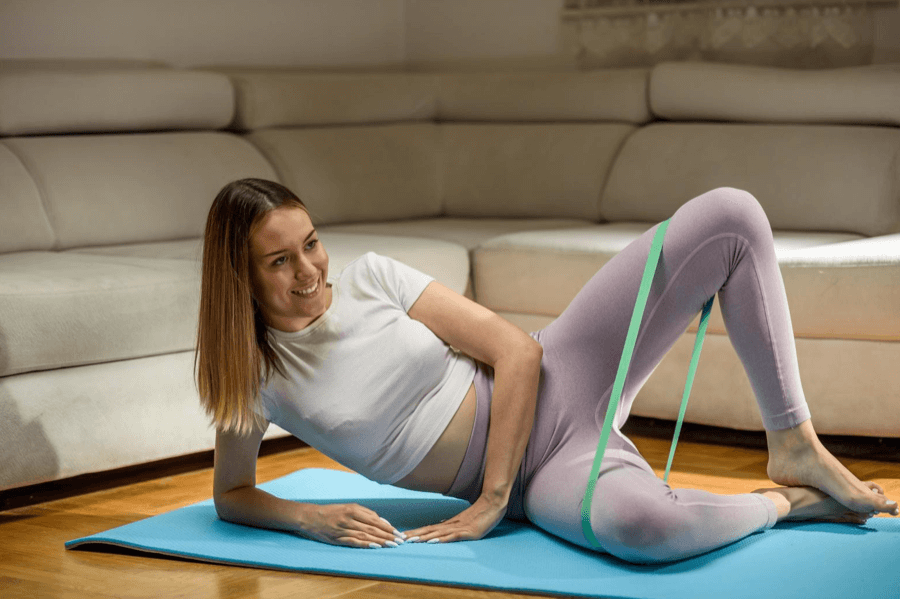
| Quad and Hamstring Focus (e.g., Thursday) | |||
| Exercise | Sets | Reps | Rest (minutes) |
| Bulgarian Split Squat | 3 | 12-15 (per leg) | 1.5 |
| Goblet Squat | 3 | 12-15 | 1.5 |
| Standing Leg Curl | 3 | 20-25 (per leg) | 1 |
| Reverse Lunge (Dumbbell) | 3 | 24-30 (total) | 1.5 |
Note:
Use an ankle weight to make standing leg curls more challenging if you can easily do 25-30 reps. Alternatively, wrap a band over your ankle and attach it to a door via an anchor (these come with most resistance band sets).
What equipment you will need: an exercise mat and a pair of dumbbells; resistance bands are optional
Workout duration: 25-30 minutes, not including a warm-up
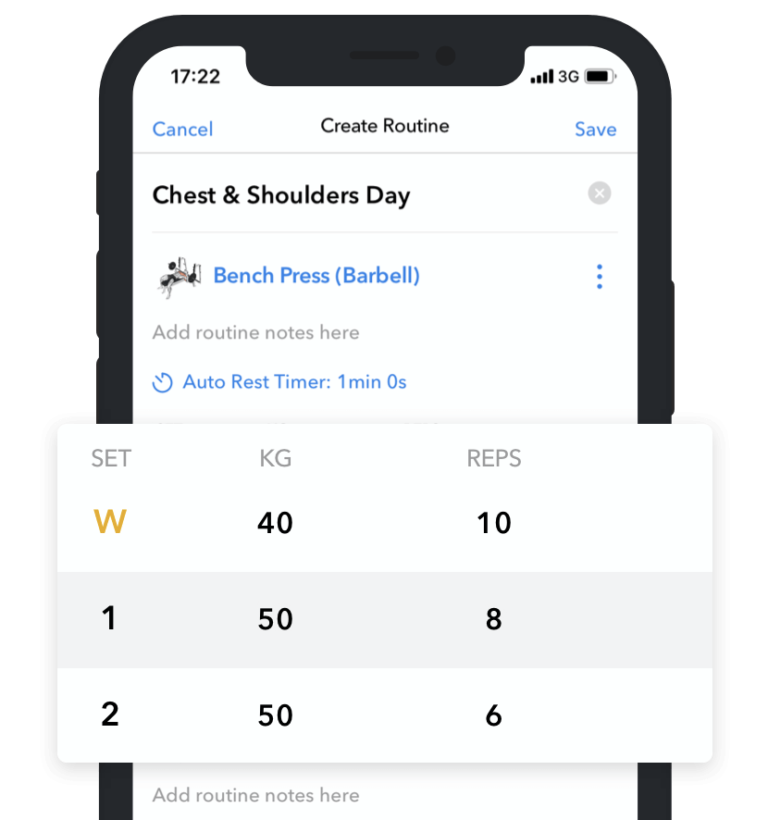
Hevy – Workout Tracker





Hevy – Workout Tracker
Create and log your pr workout with Hevy and track your progress
2. Full-Body Cardio Blaster
Cardiovascular exercise is highly beneficial, with research suggesting it promotes weight loss, improves triglyceride levels, helps control blood sugar, and boosts overall cardiovascular health (1, 2, 3, 4).
That said, going for a run isn’t always possible, and you might not be the biggest fan of long sessions on the treadmill.
Fortunately, there are alternative and far more engaging ways to get your cardio in and train more muscle groups than you would by incline walking or jogging. Let’s check out this full-body high-intensity interval training workout:
| Jumping Jack (1 minute) ⇒ High Knees (1 minute) ⇒ Mountain Climber (1 minute) ⇒ Jump Squat (1 minute) ⇒ Plank Jack (1 minute) ⇒ Burpee (1 minute) |
The goal is to perform these activities one after the other with little to no rest in between. For instance, you would start with jumping jacks for a minute, immediately jump to high knees, then do mountain climbers.
A bit of rest between the movements is okay, especially if you feel winded and unable to continue. However, do your best to limit the pauses and only take a break once you do all six exercises for a minute.
Take up to three minutes to recover once you complete one round and do another two to three rounds, depending on how you feel and what you can handle.
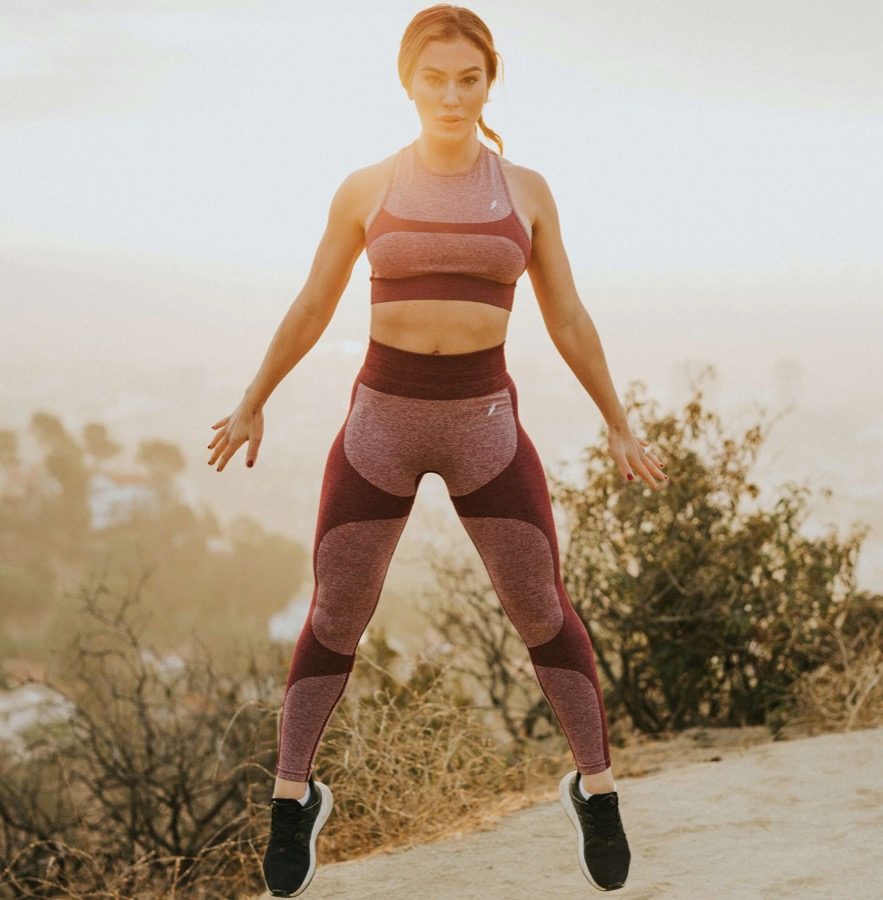

On the topic of tempo, don’t rush through the activities, especially at first. You’ll be rested at first, so it might make sense to push yourself hard. However, fatigue has a way of building up, and you might feel exhausted by the end of the first exercise.
Compare the workout to a run in the park. Just as you wouldn’t start your run with a sprint, you shouldn’t train at too high an intensity when you start the circuit.
Maintaining a consistent tempo is also vital for proper form. The quicker you do the exercises, the more likely you are to experience a breakdown in your form.
In contrast, by doing reps more slowly, you can focus on the range of motion, your body’s position, and activating the correct muscles.
What equipment you will need: an exercise mat
Workout duration: 8 to 30+ minutes, depending on how many rounds you do
3. Arms and Abs
Arms and abs might sound like something straight out of a Men’s Fitness magazine, but this training approach is also highly valuable for the ladies.
When done right, resistance training offers numerous benefits, including:
- Building muscle and creating a ‘toned’ body
- Gaining strength to tackle everyday activities with ease (5)
- Improving core strength and stability
- Maintaining better posture, even with a desk job (6)
- Alleviating stress and boosting mental health (7)
- Improving insulin sensitivity and controlling blood sugar levels (8)
That said, the following is not that different from a workout a coach might prescribe to a male client. The primary difference is that the weights will be slightly lighter, with a greater emphasis on high-rep training. Let’s take a look.
| Exercise | Sets | Reps | Rest (minutes) |
| Bicep Curl (Dumbbell) | 3 | 20-25 | 1.5 |
| Bench Dip | 3 | 8-15 | 2 |
| Hammer Curl (Band) | 3 | 20-25 | 1.5 |
| Single Arm Tricep Extension (Dumbbell) | 3 | 20-25 | 1.5 |
| Dead Bug | 2-3 | 5-10 (per side) | 1.5 |
| Flutter Kicks | 2-3 | 60 seconds | 1 |
You can do this workout once or twice per week to strengthen your biceps, triceps, shoulders, abs, and obliques.
What equipment you will need: a pair of dumbbells (preferably adjustable), a sturdy chair for dips, resistance bands (preferably a set), and an exercise mat
Workout duration: 35-40 minutes, not including a warm-up
4. Full Body Dumbbell Workout
Dumbbells are one of the best training tools for home workouts. They are incredibly versatile and force both sides of your body to work independently, reducing the risk of muscle or strength imbalances.
Plus, as you’ll see in a moment, you can do numerous effective exercises to target all the major muscle groups.
The following workout is similar to something you would do at the gym, but if you only had access to some dumbbells and an exercise mat. It’s easily the best full-body workout you could do at home with just a pair of dumbbells.
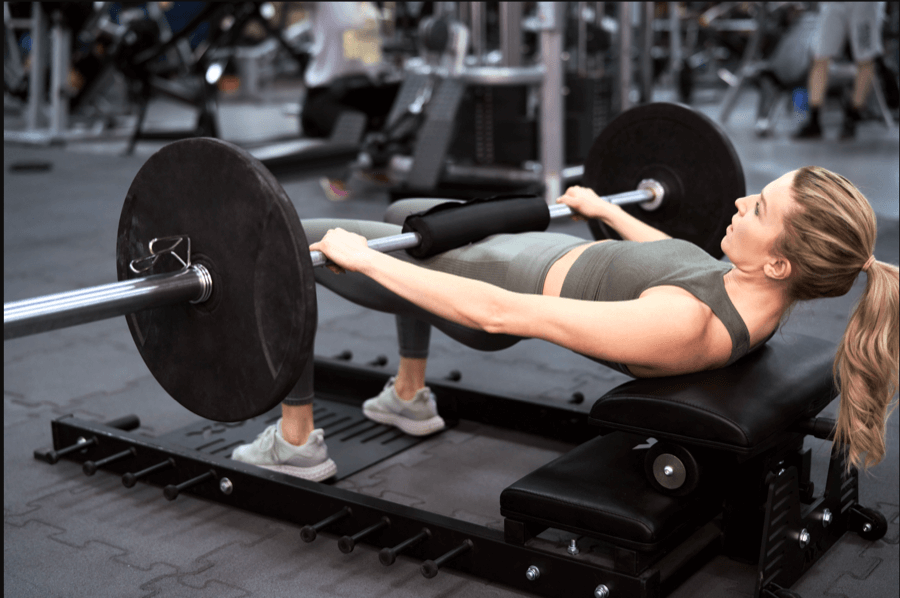

Feel free to log it with the Hevy app and track your progress from session to session.
| Exercise | Sets | Reps | Rest (minutes) |
| Hip Thrust (Dumbbell) | 3 | 8-10 | 2 |
| Goblet Squat | 3 | 12-15 | 2 |
| Romanian Deadlift (Dumbbell) | 3 | 12-15 | 2 |
| Floor Press (Dumbbell) | 3 | 15-20 | 1.5 |
| Bent Over Row (Dumbbell) | 3 | 15-20 | 1.5 |
| Lateral Raise (Dumbbell) | 2-3 | 20-25 | 1 |
| Bicep Curl (Dumbbell) | 2-3 | 20-25 | 1 |
| Tricep Kickback (Dumbbell) | 2-3 | 20-25 | 1 |
The best part? You can do this exact workout two to three days per week to get stronger and build muscle. However, if that feels a bit dull, here is a similar full-body workout but with some exercise modifications to keep things interesting:
| Exercise | Sets | Reps | Rest (minutes) |
| Frog Pumps (Dumbbell) | 3 | 15-20 | 1.5 |
| Bulgarian Split Squat | 3 | 15-20 (per leg) | 1.5 |
| Standing Leg Curls | 3 | 20-30 (per leg) | 1.5 |
| Chest Fly (Dumbbell) | 3 | 20-25 | 1.5 |
| Dumbbell Row | 3 | 20-25 (per side) | 1.5 |
| Overhead Press (Dumbbell) | 2-3 | 20-25 | 1.5 |
| Hammer Curl (Dumbbell) | 2-3 | 20-25 | 1 |
| Triceps Extension (Dumbbell) | 2-3 | 20-25 | 1 |
What equipment you will need: a pair of adjustable dumbbells and an exercise mat
Workout duration: 40-50 minutes, not including a warm-up
Related article: 6 Full Body Workouts for Strength and Muscle Mass
5. 25-Minute Equipment-Free Cardio Program
If resistance training is not your thing or you’re looking to supplement your weight training routine, the following cardio program is a fantastic option.
It consists of three distinct cardio workouts, each lasting approximately 25 minutes. Like the full-body cardio blaster discussed above, the following workouts include equipment-free exercises, which means you can do them at home or outdoors.
Plus, the goal is to raise your heart rate and keep it elevated for an extended period, which means you must maintain a consistent tempo and not push the intensity too high.
With that in mind, let’s review the three workouts:
Workout 1 (e.g., Monday)
Warm-up (5 minutes)
- Dynamic stretching for the whole body
- Effective activities include leg swings, arm swings, elbow rotations, wrist twists, etc.
- Some light cardio activities for up to 30 seconds at a time (jumping jacks, high knees, etc.)
Workout (20 minutes)
- Mountain Climbers (60 seconds)
- Jumping Jacks (60 seconds)
- Squat (Bodyweight) (60 seconds)
- Flutter Kicks (60 seconds)
- Recovery (60 seconds)
Repeat this circuit three more times.
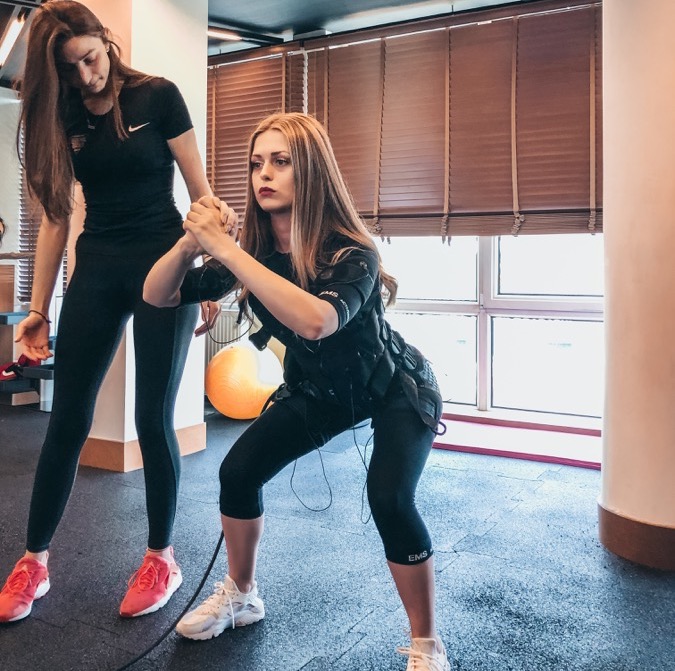

Workout 2 (e.g., Wednesday)
Warm-up (5 minutes)
- Same as for the previous workout
Workout (20 minutes)
- Burpees (60 seconds)
- Butt Kicks (60 seconds)
- High Knees (60 seconds)
- Running in Place (60 seconds)
- Recovery (60 seconds)
Repeat this circuit three more times.
Workout 3 (e.g., Friday)
Warm-up (5 minutes)
- Same as for the previous workouts
Workout (20 minutes)
- Skaters (60 seconds)
- Plank Jacks (60 seconds)
- Frog Jumps (60 seconds)
- High Knee Skips (60 seconds)
- Recovery (60 seconds)
Repeat this circuit three more times.
What equipment you will need: an exercise mat
Workout duration: 25 minutes per workout (including the warm-up)
6. Best Booty Workout at Home
The following is an effective lower body workout that primarily targets and develops the glutes for a head-turning behind. As you’ll see in a moment, it doesn’t have many exercises, but each one is included for a reason.
It’s not just about training the gluteus maximus (the largest of the gluteal muscles); the movements also work the gluteus minimus and medius, which is vital for balanced growth and strong hips.
For instance, the gluteus medius primarily adds mass to the upper buttocks and supports hip abduction (moving the leg away from your body’s midline) (9). Similarly, the glute minimus plays an essential role in hip function, overall athleticism, and how the glutes look (10).
To make the most of this and other living room workouts, it’s crucial that you:
- Use the appropriate load
- Do each rep through a full range of motion
- Maintain a consistent tempo
- Actively engage your glute muscles and feel them work
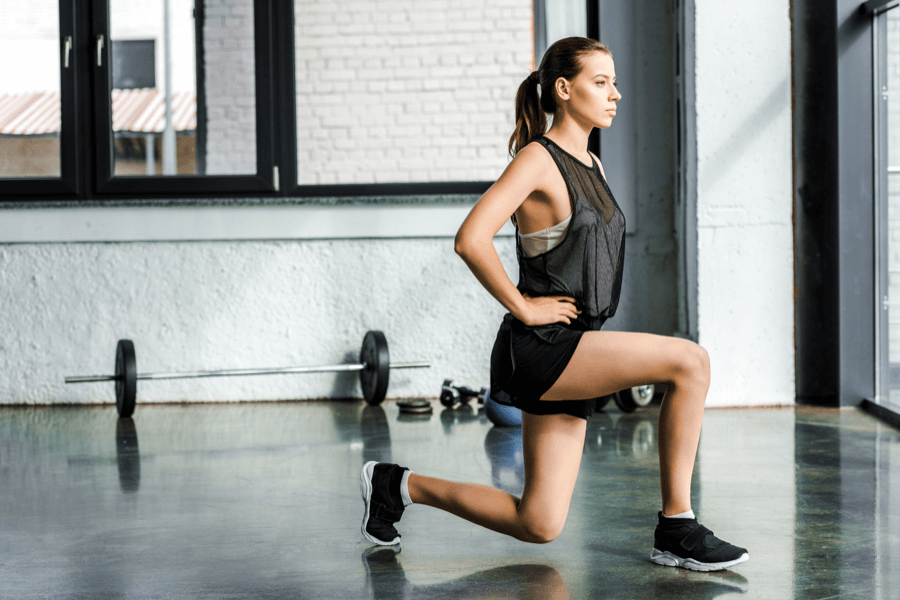

Doing reps slowly and being mindful of gluteal activation, especially on exercises that primarily work the minimus and medius, is crucial for good results.
With that in mind, let’s look at the workout:
| Exercise | Sets | Reps | Rest (minutes) |
| Lateral Band Walks* | 2 | 10-12 steps in each direction | 1 |
| Single Leg Hip Thrust (Dumbbell) | 3-4 | 10-12 per side | 2 |
| Reverse Lunge (Dumbbell) | 3 | 24-36 total | 2 |
| Glute Kickback on Floor | 3 | 20-25 per leg | 1.5 |
| Clamshell | 3 | 20-25 per side | 1.5 |
*For lateral band walks, the goal is to activate the glutes, so no need to train close to failure. Do enough steps in both directions to feel the muscles engage and get a light ‘burning’ sensation.
If you struggle with balance during single-leg hip thrusts, perform the movement with both feet on the floor, but use a heavier dumbbell.
You can fold the exercise mat and place it on your hips as a cushion so the weight doesn’t cause too much discomfort. The goal is to do 10 to 12 slow and controlled reps.
Reverse lunges will train your quadriceps alongside the glutes. If you feel too much tension in the quads and not enough in the glutes, do the movement without weights for a while and descend slowly.
Alternatively, swap the reverse lunge for Bulgarian split squats. A longer stance where you lean forward to a greater degree helps you engage the glutes more.
Finally, when doing the glute kickback and clamshell movements, continue doing slow and controlled reps. Technique breakdown is relatively common and can affect glute activation.
Use a mini (booty) resistance band for additional tension during clamshells and attach ankle weights for glute kickbacks.
What equipment you will need: a pair of adjustable dumbbells, a mini resistance (booty) band, and an exercise mat; ankle weights are optional
Workout duration: approximately 35 minutes, excluding a warm-up
Related article: Top 15 Gluteus Minimus Activation Exercises
7. Resistance Band Program For Strength and Definition
To finish the list, we have an at-home program that blends resistance band and bodyweight exercises to train the whole body. There are three weekly workouts, each targeting a specific region of the body:
- Push – focusing on the chest, shoulders, and triceps
- Pull – working the back musculature and biceps
- Legs – training the muscles in the lower body
This is also known as a push/pull/legs split. Let’s look at the three strength training workouts:
| Workout 1 | |||
| Exercise | Sets | Reps | Rest (minutes) |
| Floor Press (Dumbbell)* | 3-4 | 15-20 | 2 |
| Shoulder Press (Dumbbell) | 3-4 | 15-20 | 2 |
| Lateral Raise (Band) | 3 | 20-25 | 1.5 |
| Skullcrusher (Dumbbell)** | 3 | 20-25 | 1.5 |
*You can also do push-ups if the floor press doesn’t engage your chest muscles adequately.
**Perform these while lying on the floor. The dumbbells should travel to the sides of your head at the bottom position.
| Workout 2 | |||
| Exercise | Sets | Reps | Rest (minutes) |
| Bent Over Row (Dumbbell) | 3 | 15-20 | 2 |
| Lat Pulldown (Band)* | 3 | 15-20 | 2 |
| Horizontal Row (Band) | 3 | 20-25 | 1.5 |
| Hammer Curl (Band) | 3 | 20-25 | 1.5 |
*You will need a resistance band door anchor to set up for banded pulldowns. These typically come with band sets but are also sold separately.
| Workout 3 | |||
| Exercise | Sets | Reps | Rest (minutes) |
| Romanian Deadlift (Dumbbell) | 3 | 12-15 | 2 |
| Squat (Band) | 3 | 15-20 | 1.5 |
| Single Leg Glute Bridge | 3 | 20-25 | 1.5 |
| Glute Kickback on Floor | 3 | 20-25 | 1.5 |
| Lateral Band Walks | 3 | 25-30 steps in each direction | 1 |
The beauty of this split is that you don’t need a gym. Each at-home workout is designed for you to do with minimal equipment.
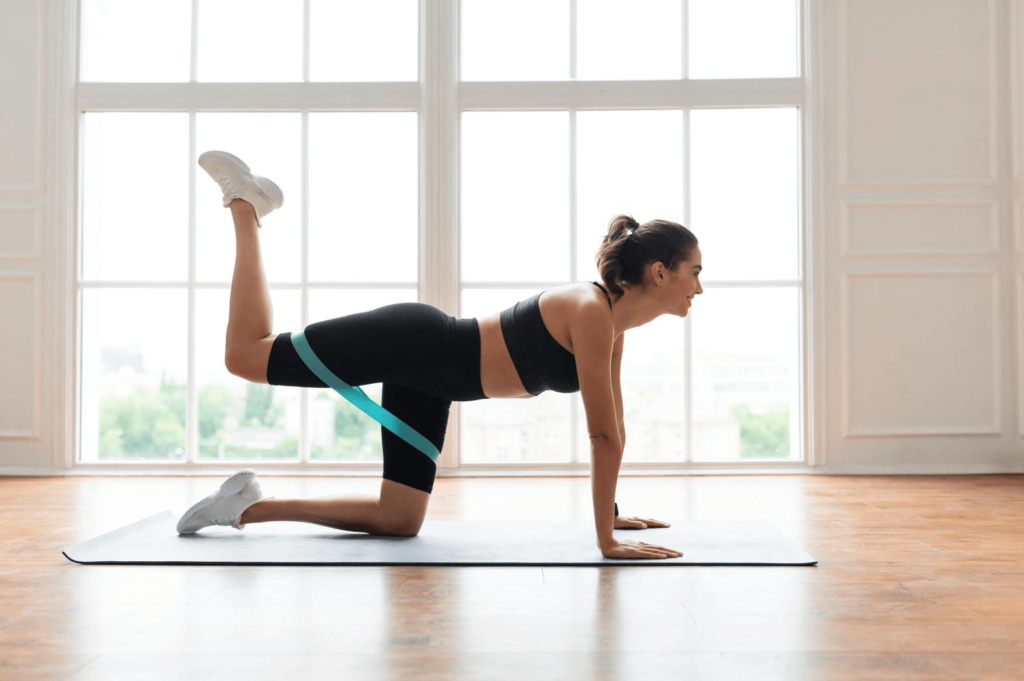

We recommend getting a pair of adjustable dumbbells (nothing too heavy – up to 50 lbs are enough as a start) and a resistance band set (with a door anchor) to increase your exercise options.
An alternative for dumbbells could be bottles filled with water or milk jugs. You can use these as weights for various exercises. Another option is to fill a backpack with books or canned goods for extra resistance on squats, lunges, push-ups, and other bodyweight movements.
You can also include some cardio exercises to finish off each workout if you’d like. Good options include:
- Jumping Jacks
- High Knees
- Mountain Climbers
- Flutter Kicks
For instance, perform a movement for 60 seconds as quickly as you can while maintaining proper form. Once done, take a minute to recover and repeat two to three more times.
What equipment you will need: a pair of adjustable dumbbells, a resistance band set with a door anchor, an exercise mat, and a mini (booty) band
Workout duration: 30-35 minutes per session (average), not including a warm-up





Hevy – Workout Tracker





Hevy – Workout Tracker
Create and log your pr workout with Hevy and track your progress
Conclusion
Home workout programs are often seen as less effective and only suitable for beginners who can see positive results from virtually any type of exercise. Fortunately, that isn’t true.
You can train effectively and provide the necessary stimulus to build muscle, get stronger, and improve your cardio at home with little to no equipment.
What matters more is staying consistent, pushing yourself hard, and focusing on proper technique.
To that end, it’s also essential to track your performance to see if you’re making progress. One excellent option is Hevy––a simple and effective workout tracker. With it, you can create your workouts in minutes, log each activity quickly, and share your results with friends.
FAQs
1. Are at-home workouts good for weight loss?
Home workouts can promote weight loss. However, it’s also crucial to maintain a calorie deficit by tracking your nutrition and limiting portion sizes (11).
2. Are 30-minute workouts enough?
Training for half an hour can work, so long as you push the intensity. As you saw above, there are plenty of workouts you can do in just about 30 minutes.
3. How often to work out?
There isn’t a perfect frequency. You should dedicate yourself to what feels sustainable. For most people, three to four weekly workouts are the sweet spot.

